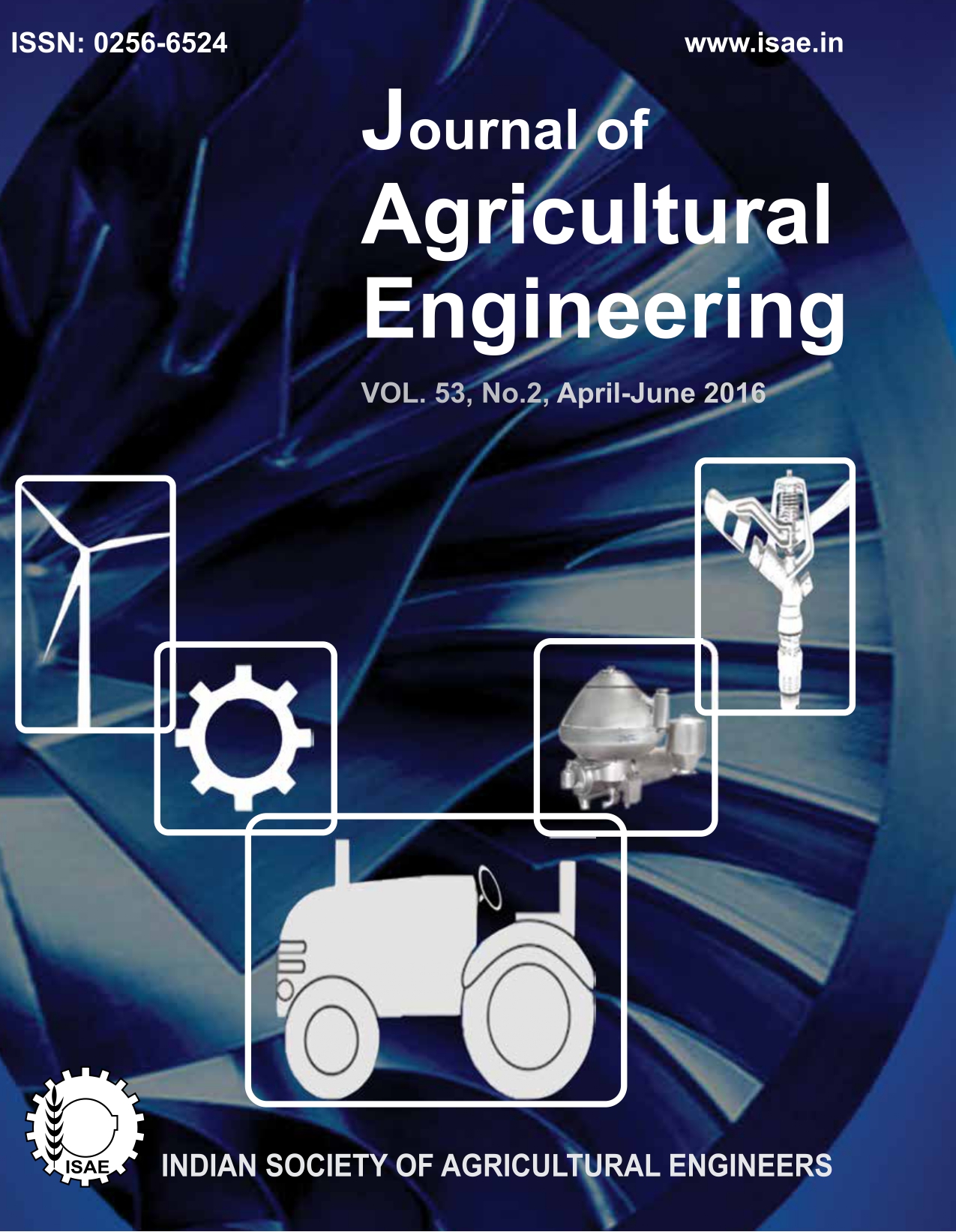Development of Animal Drawn Peg Planker for Secondary Tillage in Hill Agriculture
DOI:
https://doi.org/10.52151/jae2016532.1601Keywords:
Planker, coefficient of gradation, uniformity coefficient, hill agriculture, mechanization, energy inputAbstract
Indigenous wooden log with peg type harrow, locally known as dante in Sikkim, is used for secondary tillage. Several designs of improved peg type harrow for the plains are not suitable for the narrow terraces of less than 3.0 m width on steep hills. An animal drawn peg planker of 800 mm working width made of mild steel sheet was developed to suit the topographical conditions of the North Eastern Hill Region of India, and serve as a substitute to the local wooden peg type harrow. The animal drawn peg planker was field tested by determining the soil particle size distribution curve. The average post-operation large size clod was of 112.55 × 81.25 mm in control plot and 71.82 × 54.70 mm in field operated by the peg planker. The local wooden peg harrow and the developed peg planker had work rate of 0.035 and 0.047 ha.h-1; and draft requirement of 52.0 kgf and 48.0 kgf, respectively. The effective size, uniformity coefficient and coefficient of gradation were 0.17, 20.0, 0.97 and 0.25, 40.0,1.91, respectively, for the local wooden peg harrow and the developed peg planker. These values suggested that the soil was finer, well and uniformly graded by use of the developed peg planker as compared to the local wooden peg harrow. The total energy input required was 2077.96 MJ.ha-1 and 1546.97 MJ.ha-1 for local wooden peg harrow and developed peg planker, respectively. The saving in energy input by use of the developed planker was 25.55 per cent.
References
Ahmadi H; Mollazade K. 2009. Effect of plowing depth and soil moisture content on reduced secondary tillage. Agric. Eng.Int. CIGR EJ., XI, Manuscript MES 1195.
Alipour A; Veisi H; Darijani F; Mirbagheri B; Behbahani AG. 2012. Study and determination of energy consumption to produce conventional rice of the Guilan province. Res. Agric. Eng., 58 (3), 99-106.
Dixit Jagvir. 2006. Performance of light weight rotary tiller for different agricultural operations. J. Agric. Eng.,43(4), 98-103.
Kalbande S R; More G R. 2008. Assessment of energy requirement for cultivation of kharif and rabi sorghum. Karnataka J. Agric. Sci., 21(3), 416-420.
Mittal J P; Dhawan K C. 1989. Energy parameters for raising crops under various irrigation treatments in Indian agriculture. Agric. Ecosystems Environ., 25(1), 11-25.
Singh Shashi Kumar; Wadhwa D S. 2002. Energy in soil failure under different boundary conditions. J. Agric. Eng., 39(3), 26-32.
Sun Y; Michiaki I T O; Araki Hajime; Yamashita Yoneji. 2004. Effect of soil clod-size on the emergence and growth in some crops. Jpn. J. Farm Work Res., 39(3), 151-156.
Yassen H A; Hassan H M; Hamadi I A. 1992. Effects of plowing depth using different plow types on some physical properties of soil. AMA, 23(4), 21-24.














